New buildings are being erected in compliance with special requirements for the installation of electrical wiring. It must necessarily have grounding loops in its design. This is due to the fact that household appliances are high-power electrical installations enclosed in a metal case, so there is always a risk of a short circuit, which can pose a serious threat to humans. In this regard, a plug socket with an earthing contact is part of any new home.
Socket design
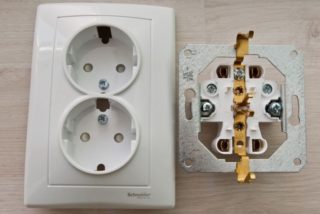
The main difference between the design of a plug socket and a conventional one is that it has three or five contacts, depending on whether it is part of a single-phase or three-phase network, respectively. Otherwise, there are no significant differences. A two-pole socket with a protective contact can be:
- overhead;
- hidden;
- single;
- double;
- triple.
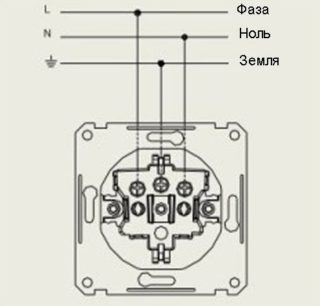
A standard plug socket consists of three parts:
- contact;
- body;
- block.
The housing is used as decoration and to provide protection of connectors from external influences - it blocks access to conductive elements. If the house requires the installation of three or more paired electric outlets, separate ones equipped with a plastic core are installed in the frame.
The lid is always made of special plastic that is resistant to high temperatures and mechanical damage. If you wish, you can choose a case that will match the interior of the room. Certain models are also equipped with other components: backlight, push-button, and others.
The main device is a carbolite or ceramic block that secures the contacts and the cover. Carbolite ones are characterized by increased strength, but most often they are found only in old outlets. Ceramic itself is quite fragile, and therefore, during installation, you should be extremely careful, since if even small damage occurs on the block, the component can no longer be restored.
How to connect sockets
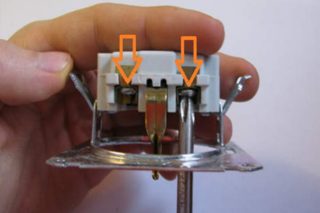
Two-pole sockets with a grounding contact can be of several types. On the Russian market, you can find only three key designs, the names of which differ according to the country of origin, where they are often made and are the most common.
- French. In this design, the grounding pin is a simple prong that goes into the plug when plugged into the outlet. For such a connection, a special plug must be used, the hole in which will correspond to the pin.
- German. The main difference of this design is the presence of special clamps located on the sides and performing the function of a grounding contact. This approach provides not only the ability to quickly connect the ground loop, but also a convenient fixation of the plug in the socket.
- American. Differs in the arrangement of grounding contacts in special holes of the main connectors of the structure.
Hidden
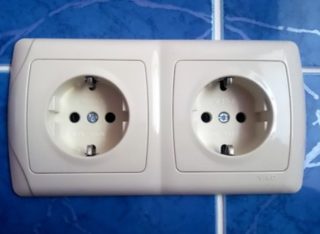
Most often, this version of plug sockets is used when conducting wiring indoors.The main part is inside the wall, the protective case is placed in the junction box and almost does not go beyond the wall plane. The node through which the wires are connected is installed in such a way as to completely exclude the possibility of squeezing out the cables. The tightness of the fork is ensured by the use of a spring washer.
Outdoor
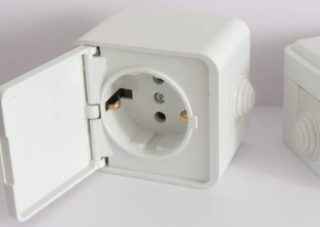
It is mainly part of exposed wiring and is fixed to the wall. The base is located in a plastic case, fixed to the wall with a special socket. The design includes a backlight, a switch-off timer, and a lid equipped with a childproof lock.
Waterproof
A special category of sockets designed for use in rooms with a high degree of humidity: bathrooms, swimming pools or baths. The main difference from the conventional version is the presence of a special membrane, which is used as a reliable barrier that protects the working contacts. Plastic curtains and covers are equipped with an internal flange through which water and accumulated condensate can be drained off.
Installation rules
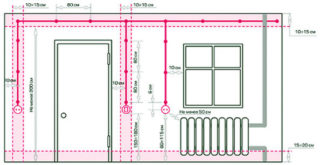
In order for the outlet to work for a long time after installation, reliably and safely, you need to follow simple rules:
- The electric point should be installed at a height of 30 to 80 cm from the floor level, with the exception of skirting models.
- Models equipped with a ground connection must be installed no closer than 50 cm from the appliance or gas pipe.
- If there are children in the house, the sockets should be installed higher.
- Single or double plug sockets for hidden installation must be clothed in an iron or plastic case, and the wire reserve in them must be 5-6 cm.
- When laying a new power line, take care of installing power points immediately.
- If you need to put several sockets in a row at once, you can use boxes designed to install two pads at once. When installing a larger number, you should prepare a group of socket boxes that are fixed to each other.
- You can use the "loopback" connection scheme, when the contacts of the previous outlet are combined with the power of the next one, or you can use the option of connecting to a separate line.
Before proceeding with the installation of the plug socket, it is imperative to turn off the power supply, and also use the indicator to check the voltage.
Standards for socket outlets
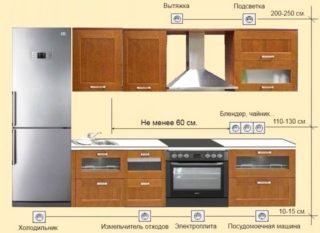
When installing and setting up electrical devices, you need to make sure that each GOST and standard governing the type of outlets and their total number in the apartment, depending on the characteristics of the room, are observed. Care should be taken to comply with the following requirements:
- For every 6 m2 of the room, at least one socket must be installed.
- In the corridor, this standard is 10 m2.
- In the kitchen, at least three sockets are installed, rated for a current of 6 A, as well as one with a grounding contact and rated for a current of 10 A, if the area of the room is less than 8 m2. Otherwise, according to the standard, there should be four food points of the first type in the kitchen.
- If a stationary electric stove is used in the room, it must be plugged into a socket rated for a current of 25A, which must be grounded.
The body of an electric point must always be marked accordingly, which determines the degree of its protection.
Selecting and installing power outlets is one of the most critical steps in wiring. If you approach this issue responsibly, you can ensure a long service life of the device and all appliances in the house.








